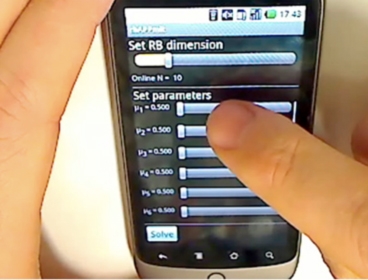Supercomputing on a cell phone
September 2, 2010
Researchers in MIT’s Department of Mechanical Engineering have developed software that can simulate complicated physical phenomena — how cracks form in building materials, for instance, or fluids flow through irregular channels — on an ordinary smartphone.
Although the current version of the software is for demonstration purposes, the work could lead to applications that let engineers perform complicated calculations in the field, and even to better control systems for vehicles or robotic systems.
The software, which is available for download, comes preloaded with models for nine problems, including heat propagation in objects of several different shapes, fluid flow around a spherical obstacle, and the effects of forces applied to a cracked pillar. As the researchers develop models for new classes of problems, they post them on a server, from which they can be downloaded.
The key to the system is the ability to quantify the degree of error in an approximation of a supercomputing calculation, a subject that MIT Ford Professor of Engineering Anthony T. Patera has been researching for almost a decade. As the researchers build a problem model, they select parameters that will successively minimize error, according to analytic techniques Patera helped developed. The calculation of error bounds is also a feature of the phone application itself. For each approximate solution of a parameterized problem, the app also displays the margin of error. The user can opt to trade speed of computation for a higher margin of error, but the app can generally get the error under 1 percent in less than a second.
More info: MIT news
